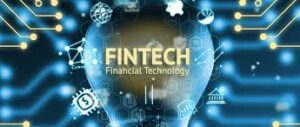1. What Are Cryptocurrency and Digital Assets?
Cryptocurrency:
A cryptocurrency is a digital or virtual currency that uses cryptography for security. Most operate on blockchain technology , which is a decentralized ledger enforced by a network of computers (nodes).
Example: Bitcoin (BTC), Ethereum (ETH), Litecoin (LTC)
Digital Assets:
A digital asset is any content or resource stored digitally that has ownership rights or value .
Examples:
Cryptocurrencies (e.g., Bitcoin, Ethereum)Stablecoins (e.g., USDT, USDC)Non-Fungible Tokens (NFTs) Tokenized real-world assets (e.g., real estate, art)Central Bank Digital Currencies (CBDCs)
2. Key Characteristics
Feature Cryptocurrency Other Digital Assets Decentralized Yes (mostly) Some are (NFTs), some are not Blockchain-based Yes Often, but not always Tradable Yes Yes (depends on type) Ownership Private key = ownership Smart contract / digital rights Regulation Often unregulated or semi-regulated Increasing regulation globally
3. History & Evolution
Year Milestone 2008 Bitcoin whitepaper by Satoshi Nakamoto 2009 Bitcoin network goes live 2011 Rival cryptocurrencies appear (Litecoin, etc.) 2015 Ethereum launches with smart contracts 2017 ICO boom (Initial Coin Offerings) 2020 DeFi (Decentralized Finance) explosion 2021 NFT market booms 2022 Major collapses (e.g., FTX, Terra-LUNA) 2023+ Regulatory tightening, institutional adoption
4. Major Types of Digital Assets
A. Cryptocurrencies:
Bitcoin (BTC)
Ethereum (ETH)
Solana (SOL)
Cardano (ADA)
B. Stablecoins:
USDT (Tether)
USDC (Circle)
DAI (MakerDAO)
C. NFTs (Non-Fungible Tokens):
Unique, indivisible digital items (art, music, avatars)
Platforms: OpenSea, Rarible
D. Security Tokens:
Represent ownership in real-world assets or companies
Comply with financial regulations
E. CBDCs (Central Bank Digital Currencies):
Digital currencies issued by central banks
Examples: e-CNY (China), Digital Euro (EU), Sand Dollar (Bahamas)
5. Blockchain Technology
The foundation of most digital assets.
Key Concepts:
Ledger : Record of all transactionsDecentralization : No single authorityConsensus Mechanisms :
Proof of Work (Bitcoin)
Proof of Stake (Ethereum post-merge)
Smart Contracts : Self-executing code on the blockchain
6. Use Cases
Financial:
Peer-to-peer payments
Remittances
Lending & borrowing (DeFi)
Trading/investment
Non-Financial:
Digital identity
Supply chain management
Gaming (GameFi)
Digital art and collectibles
7. Key Platforms & Ecosystems
Category Examples Blockchains Ethereum, Solana, Avalanche Exchanges Binance, Coinbase, Kraken Wallets MetaMask, Trust Wallet NFT Markets OpenSea, Rarible, Blur DeFi Apps Uniswap, Aave, Compound
8. Regulation
Varies by country:
US : SEC vs CFTC conflicts, lawsuits against crypto firmsEU : MiCA (Markets in Crypto-Assets Regulation)Asia : China bans crypto; Japan legalizes exchanges
Key issues:
Classification (commodity vs. security)
KYC/AML requirements
Stablecoin regulation
Consumer protection
9. Risks & Challenges
Risk Type Description Volatility Prices can fluctuate wildly Regulatory risk Sudden bans or crackdowns Security risks Hacks, scams, and wallet theft Tech risk Bugs in smart contracts Environmental High energy use (for PoW networks) Custodial risk Centralized exchanges can fail (e.g., FTX)
10. Benefits
Decentralization = less reliance on intermediaries
Fast, borderless transactions
Financial inclusion
Innovation in finance and tech
11. Investing in Digital Assets
Ways to invest:
Direct purchase (via exchanges)
Crypto ETFs (limited in some countries)
DeFi protocols (yield farming, staking)
NFTs and metaverse real estate
Tools for investors:
CoinMarketCap / CoinGecko (tracking)
Hardware wallets (Ledger, Trezor)
Portfolio trackers (e.g., Zapper, DeBank)
🔹 12. Future Outlook
Greater regulation = more institutional trustInteroperability between chainsTokenization of real-world assets (stocks, real estate)AI + blockchain integrationsMainstream adoption (payments, finance, entertainment)






Post Comment